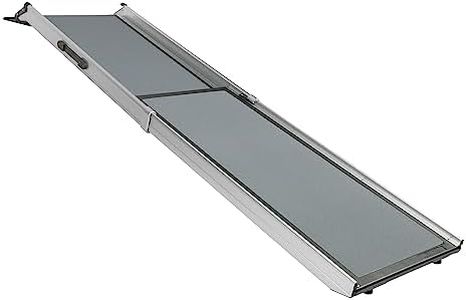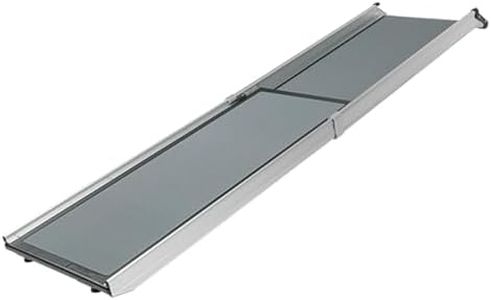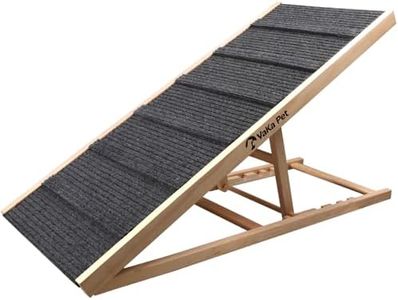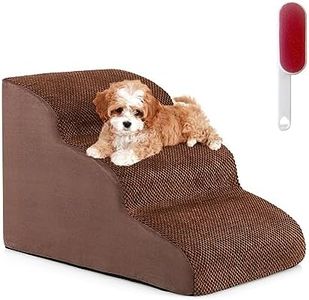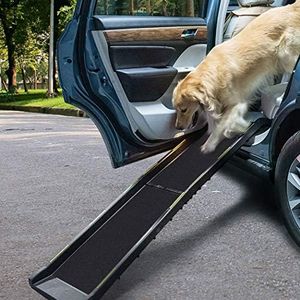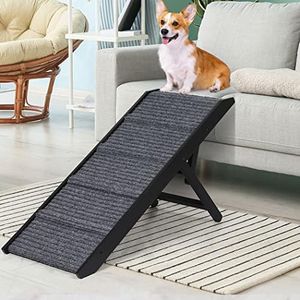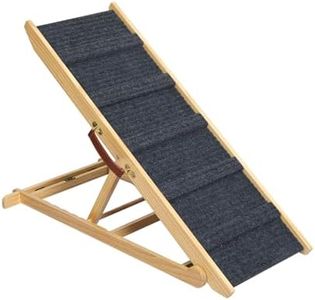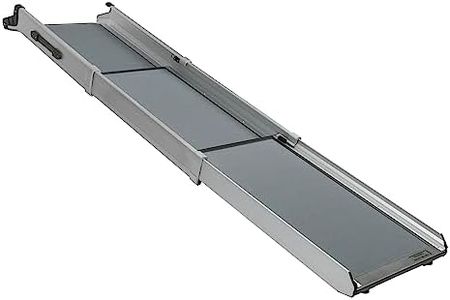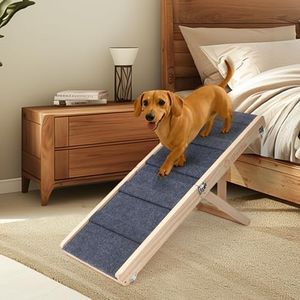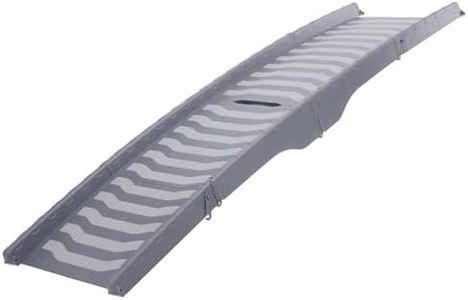We Use CookiesWe use cookies to enhance the security, performance,
functionality and for analytical and promotional activities. By continuing to browse this site you
are agreeing to our privacy policy
10 Best Pet Ramps For Dogs
From leading brands and best sellers available on the web.Buying Guide for the Best Pet Ramps For Dogs
Choosing the right pet ramp for your dog can greatly improve their mobility and comfort, especially for elderly dogs or those with joint issues. The goal is to select a ramp that is safe, easy to use, suits your living environment, and matches your dog's size and needs. By understanding the basic elements that define a pet ramp, you'll be able to confidently pick the best one for your furry companion.Length and InclineThe length of a pet ramp determines how steep the incline will be when it's set up. A longer ramp provides a gentler slope, making it easier for dogs to walk up, especially if they have arthritis or mobility issues. Shorter ramps create steeper inclines, which might be challenging for older or smaller dogs but can work in tight spaces. When picking the right length, consider where you'll use the ramp (bed, car, couch) and your dog's mobility level. For comfort, most dogs do better with a longer, less steep ramp.
Weight CapacityWeight capacity tells you how much weight the ramp can safely support without risk of bending or breaking. It's crucial to choose a ramp that can handle at least your dog's weight, plus a little extra for safety. If you have a small dog, you can pick most standard ramps, but for larger breeds, always check that the ramp's capacity matches your dog's weight. This ensures safety and longevity of the ramp.
Surface Material and TractionThe ramp's surface material affects how easily your dog can grip the ramp as they walk up or down. Traction is especially important to prevent slipping, which can lead to injury. Common surfaces include textured fabric, rubber, or carpeting. Dogs with mobility issues or older dogs benefit from a soft, high-traction surface, while energetic, healthy dogs might need less grip. Think about your dog's confidence and stability—if your dog tends to slip on smooth floors, choose a ramp with extra grip.
Portability and StorageHow portable a ramp is depends on its weight, whether it folds, and how easy it is to move or store away. Lightweight or foldable ramps are great for people who need to set up and take down the ramp often or take it on trips. If the ramp stays in one spot (like next to a bed), portability might not matter as much. Consider your living arrangement and how frequently you'll move the ramp to decide how important this feature is for you.
WidthThe width of the ramp should be wide enough for your dog to walk comfortably, but not excessively bulky for your space. Narrow ramps might be scary or uncomfortable for larger dogs or dogs with balance issues, while extra wide ramps take up more room. Pick a width that matches your dog’s size and confidence level—if your dog seems unsure on narrow pathways, go for something a bit broader.
Ease of CleaningRamps can get dirty from paws, spills, or outdoor use, so ease of cleaning matters for both hygiene and long-term use. Some ramps have removable, washable covers, while others need to be wiped down. If you plan to use the ramp outdoors or have a dog that sheds a lot or tracks in dirt, choose a ramp that’s easy to keep clean.


